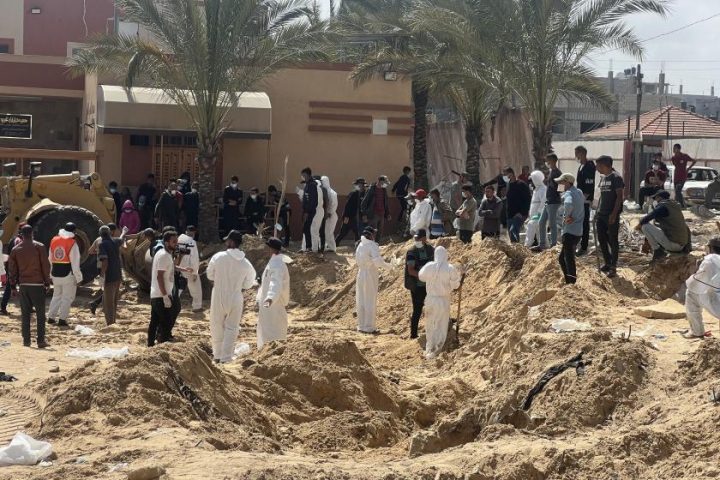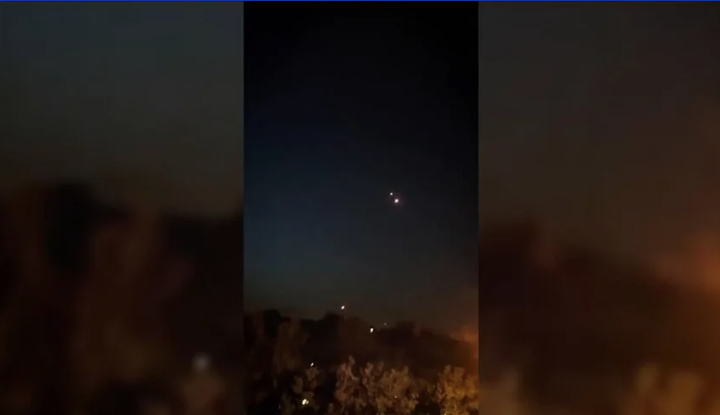Following Hamas strikes, Israel started an invasion into Gaza on October 7, raising global worries about a wider Middle Eastern conflict.
In addition to the Gaza conflict, tensions rose this week with battles between Israeli forces and Hezbollah in southern Lebanon, Houthi attacks on cargo ships in the Red Sea, and a US-UK air campaign in Yemen.
In response to Iranian assaults on Pakistani soil on Tuesday night, Islamabad conducted an airstrike on numerous Iranian sites in the early hours of Thursday morning.
Both governments claim to have targeted terrorist organizations on their own territories.
Pakistan and Iran share a 900-kilometer border. On one side of the border is Pakistan’s Balochistan province, and on the other is Iran’s Sistan and Balochistan province.
Separatist militant groups that both countries have been fighting for many years have been active along this border.
Both countries fight a common enemy on the border, but rarely carry out attacks on each other’s territory.
What happened?
Iran’s Islamic Revolutionary Guard Corps (IRGC) announced on Tuesday night that missile strikes had been launched against targets in Iraq and Syria, as well as some targets in Pakistani territory.
Official statements from Tehran claimed that the targets struck belonged to anti-Iranian terrorist organizations and espionage networks.
According to Islamabad, the attacks, which killed two children, have sparked outrage in Pakistan.
The Pakistani government described the attacks as “a terrible assault on international law and the spirit of Pakistan-Iran relations”.
A few days after this announcement came Pakistan’s airstrike against Iran. It was the first airstrike on Iranian territory since the end of the Iran-Iraq war in 1988.
According to Islamabad, the targets hit in Iran’s Sistan and Baluchistan province belong to separatist groups.
The official Pakistani statement noted that separatist fighters had found “safe havens” in Iran for many years and claimed that a group of militants had been killed in the attacks.
According to a statement from Tehran, three children and four women were among the seven people killed in the attack.
The name chosen by Pakistan for the operation, Operation Marg Bar Sarmachar, is also remarkable. The word Sarmachar means fighter in the local Balochistan language and is used to describe armed groups along the border.
Marg Bar means “death” in Farsi, a reference to the slogans “Death to the US, death to Israel” that have been frequently used in Iran since the Islamic Revolution in 1979.
Why did Iran strike Pakistan?
Arif Keskin, an expert on Iran and the Middle East, told Independent Turkish that the attacks are part of Iran’s new security concept.
Reminding that Iran had previously carried out such actions through proxy armed forces, Keskin said, “The attacks are a first in Iran’s security strategy since 1979.”
Keskin said, “In the past, Iran used to carry out such attacks through subcontractor organizations and hide itself. But now we see it striking directly and saying ‘I struck’. Iran thinks that it has the right to strike all sources that may pose a threat to it. It says, ‘I have the capability and I will do it. This is how we can formulate the new security strategy.”
Pointing out that Iran’s target is not Israel and the US, Keskin said:
We see Iran turning first to its neighbors. Pakistan, Afghanistan, Iraqi Kurdistan Regional Government and Azerbaijan. Iran’s goal is to intimidate these neighbors because it believes that these countries are influential inside Iran and could pose a security threat to it.
Defending that Tehran received an unexpected response from Pakistan, Keskin said, “I think Iran did not expect such a response from Pakistan. In a sense, I can say that it hit a hard rock. Because Pakistan disrupted Iran’s fiction with this attack. If Iran had not received a response from Pakistan, its next target would probably be Azerbaijan or Afghanistan. At the moment, this new strategy is being seriously discussed in the Iranian public opinion.”
Why now?
The mutual attacks by Iran and Pakistan come at a time when Tehran is seeking regional supremacy over Israel in the Middle East.
Since October 7, tensions between Israel and Iranian-affiliated forces in Iraq, Syria, Lebanon and Yemen have escalated, and the United States, which has long directed its diplomatic and military resources to Southeast Asia, has turned its attention back to the region.
Stating that Iran feels strong after the recent developments in the region, Arif Keskin said:
The Houthis in Yemen, the Lebanese Hezbollah, the Shiite militias in Iraq. They are all mobilized after the Gaza war. Israel has hit rock bottom, morally and legally. The US is dealing with the Houthis in the Red Sea. Looking at all this, Iran feels powerful.
In this case, fears of a widening war may have pushed Tehran to take a more active stance towards threats from across the border.
The 900-kilometer border is notoriously lawless, with smugglers operating alongside militants, and it is one of the critical routes for the opium trade, which originates in Afghanistan.
The Jaysh al Adl (Army of Justice), which Iran cited as justification for striking the Pakistani side of the border, also operates in this region. The radical Sunni group, founded in 2012 and considered a terrorist organization by Iran, killed a police officer in an attack on a police station on January 10.
Another attack by the organization last month killed 11 policemen.
Noting that Iran wants to prevent further attacks inside the country, Keskin said the following about the timing of the tension:
One of the most important expectations here is the process after the Gaza war. The Iranian leadership is actually clearing the ground for this. Many Iranian strategists believe that Iran could be the target of many assassinations and bombings after the end of the conflict in Gaza. There is also the possibility of Trump’s return in the US elections. Iran is preparing for all this. It is trying to scare its neighbors and prevent them from taking part in these processes.
What happens next?
Iran and Pakistan’s attacks against each other have caused concern in both countries.
The attacks are certain to damage diplomatic relations between the two countries, but military tensions in the region are unlikely to increase, nor are mutual attacks expected to continue.
Both countries have fulfilled the expectations of domestic public opinion with their attacks.
In mutual statements after the attacks, both Pakistani and Iranian authorities emphasized that their targets were armed militants.
Historically, both countries have been suspicious of each other regarding the activities of armed groups along the border, but the fact that the foreign ministers of both Iran and Pakistan referred to each other as “brotherly countries” in the aftermath of the attacks is an important sign that tensions on the border are unlikely to escalate into a military conflict.
Nevertheless, it should be recalled that Tehran will today launch an air defense exercise, Velayat 1402, in the port of Chabahar, close to Pakistan, in which fighter jets and air defense systems will be used with live ammunition.
Middle East expert Arif Keskin told Independent Turkish that the next steps will be a decision for war.
Keskin’s assessment of the future of the tension is as follows:
If Iran risks a war, because what comes next is a war with Pakistan, tensions will rise. But that would be a very big decision. I think Iran is avoiding a direct war and it doesn’t have the power to fight. They saw the extent of destruction in the Iran-Iraq war in 1980-88. Economically, it cannot afford a war. Pakistan is also a nuclear power with a very strong army. Nevertheless, Iran can resort to different means without a direct response. It could organize protests inside Pakistan and deepen the country’s internal problems.
What do other countries say?
Foreign Minister Hakan Fidan was the first to react to the tension between Iran and Pakistan.
Fidan said he had spoken to the parties and that the situation was under control, and called on Iran and Pakistan to exercise restraint.
The first statement from India, one of the critical actors in the region, emphasized that “the issue is between Iran and Pakistan”.
China has called for restraint and de-escalation.
Prior to the Pakistani attack, US State Department spokesman Matt Miller said yesterday that the US was trying to prevent an all-out war in the Middle East.
The article by Barış Kaygusuz from Independent Turkish has been translated into English by fikrikadim editors.





